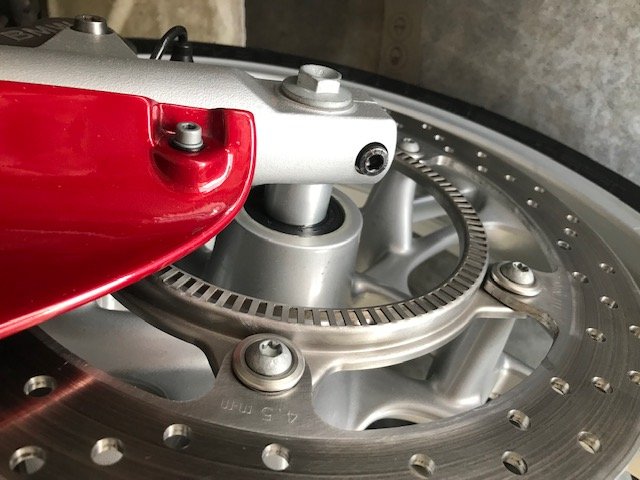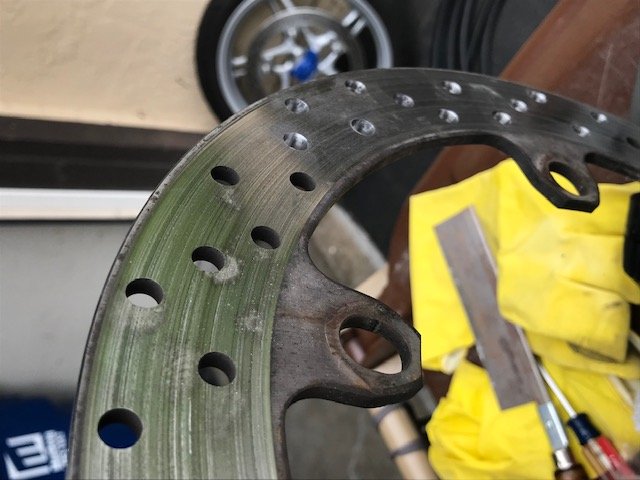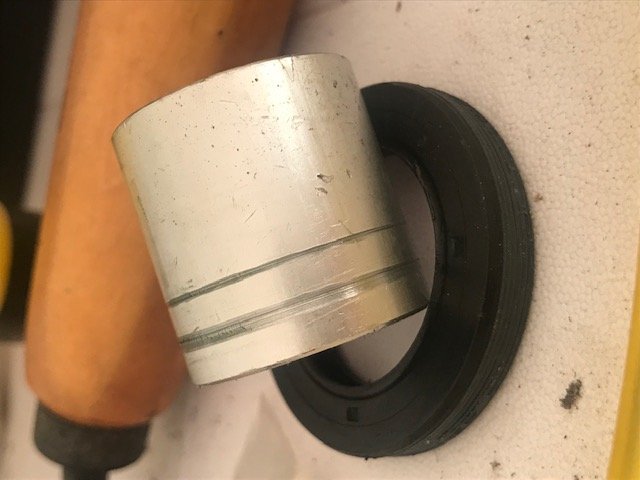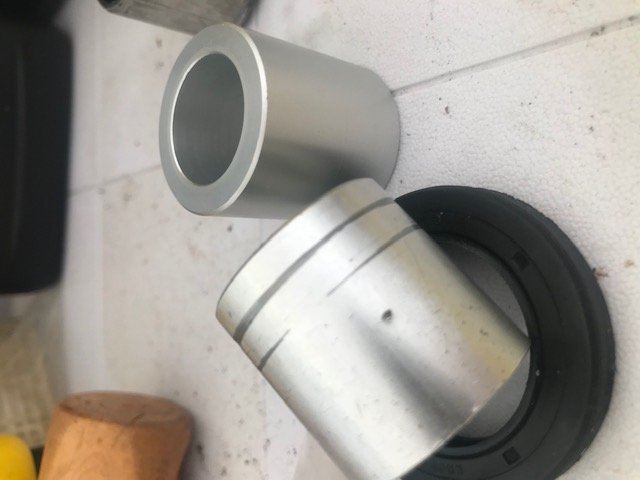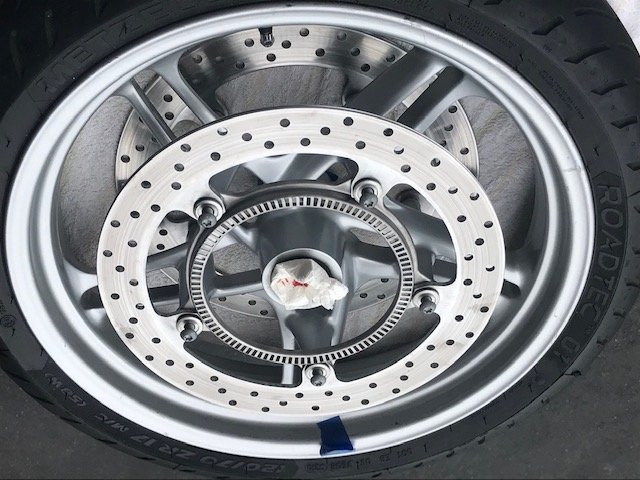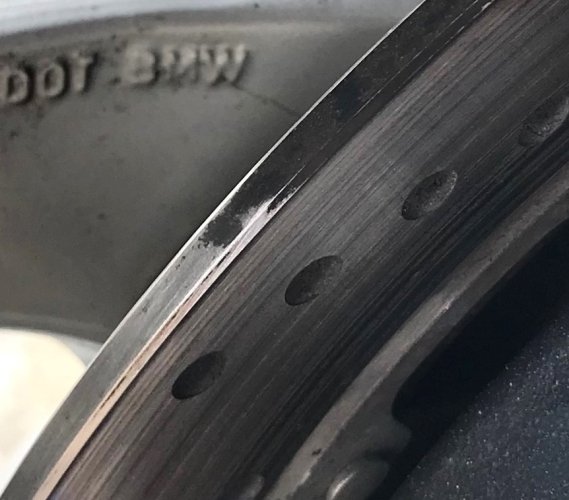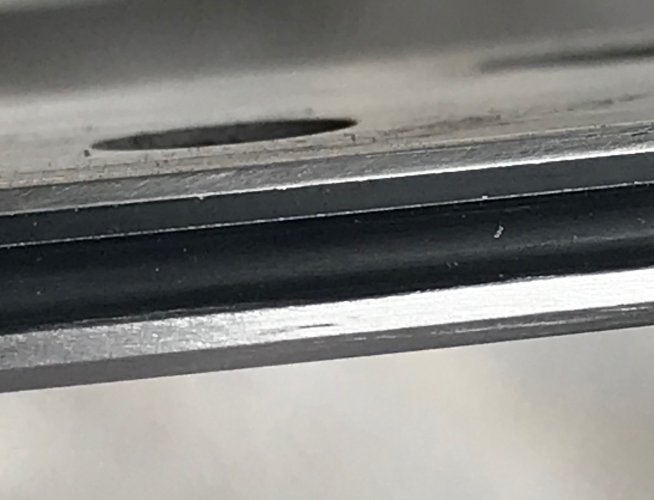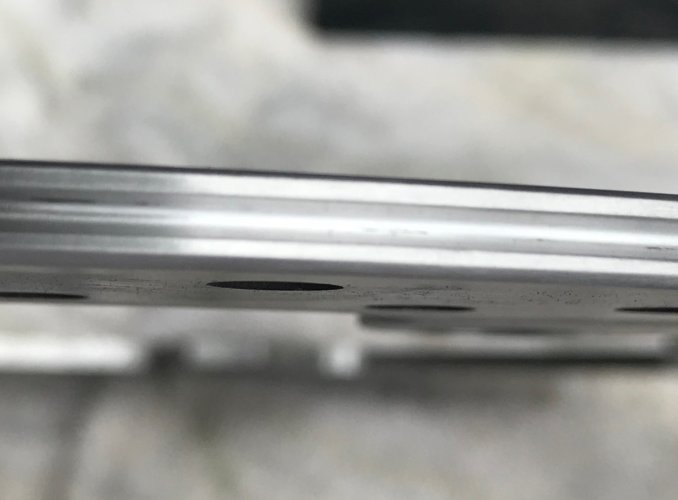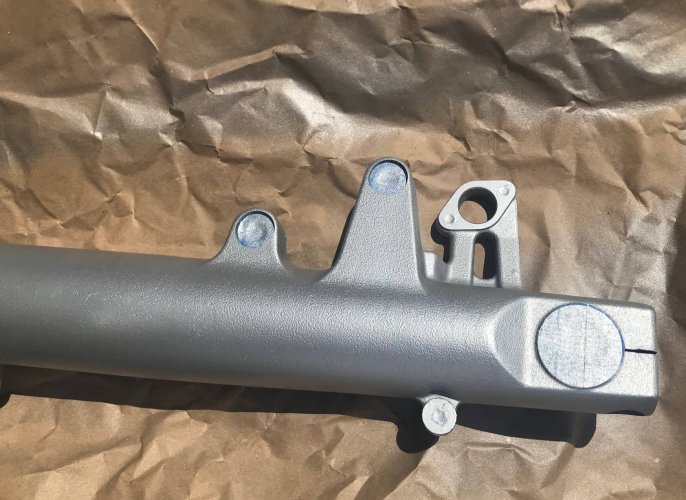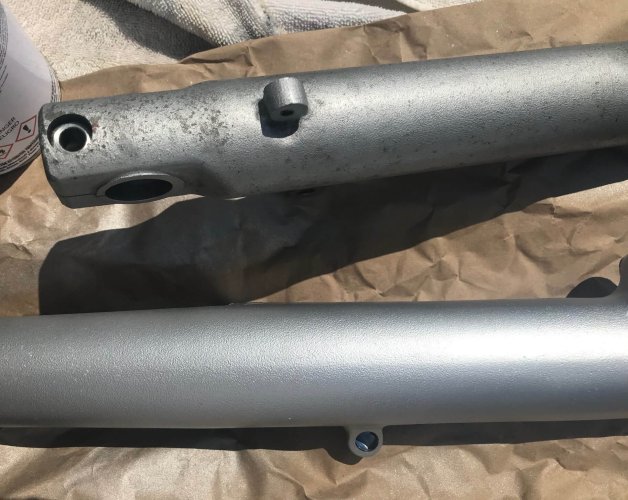2003 K1200RS
When I stripped down my front forks recently I failed to note where the single oil passage/oil bore hole in the lower portion of each fork leg was oriented (front, rear, left, right).
I'm not seeing anything in the manuals other than making sure the hole is clear and a note not to pass the portion of the fork leg with the bore hole thru the fork seal.
So I'm assuming that it doesn't matter what direction the lower fork leg oil passage hole is oriented to?
When I stripped down my front forks recently I failed to note where the single oil passage/oil bore hole in the lower portion of each fork leg was oriented (front, rear, left, right).
I'm not seeing anything in the manuals other than making sure the hole is clear and a note not to pass the portion of the fork leg with the bore hole thru the fork seal.
So I'm assuming that it doesn't matter what direction the lower fork leg oil passage hole is oriented to?


